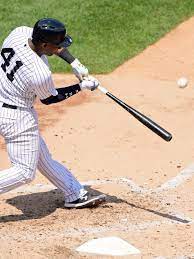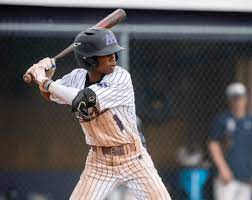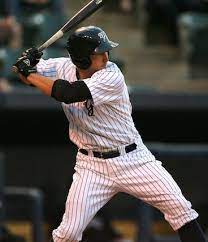I. Introduction

This guide will provide you with the best hitting drills for beginners, intermediate players, and advanced players. We will also cover how to hit a baseball, including curveballs, changeups, fastballs, sliders, and knuckleballs.
II. The Best Hitting Drills for Beginners

As a beginner baseball player, it’s important to focus on developing the fundamentals of your swing. This includes developing a strong base, a smooth swing, and good contact. The following drills will help you improve your hitting skills and get you ready for the game.
1. The Tee Drill
This is a great drill for beginners because it allows you to focus on your swing without having to worry about fielding a ball. To do this drill, you’ll need a tee and a baseball. Place the tee about waist-high and set the ball on top of it. Stand about 5 feet away from the tee and take your stance. Swing at the ball and focus on making contact with the sweet spot. Repeat this drill for 10-15 repetitions.
2. The Front Toss Drill
This drill is similar to the tee drill, but it adds the element of movement. To do this drill, you’ll need a partner to toss you the ball. Stand about 10 feet away from your partner and have them toss you the ball chest-high. Swing at the ball and focus on making contact with the sweet spot. Repeat this drill for 10-15 repetitions.
3. The Wedge Drill
This drill is designed to help you develop a smooth swing. To do this drill, you’ll need a wedge-shaped object, such as a tennis ball can or a piece of foam. Hold the object in your non-dominant hand and swing at it with your dominant hand. Focus on keeping your swing smooth and fluid. Repeat this drill for 10-15 repetitions.
4. The Shadow Swing Drill
This drill is a great way to practice your swing without having to use a ball. To do this drill, stand in your batting stance and take your swing. Focus on making a smooth, powerful swing. Repeat this drill for 10-15 repetitions.
5. The Bunting Drill
Bunting is a valuable skill for any baseball player to have. This drill will help you improve your bunting technique. To do this drill, you’ll need a partner to toss you the ball. Stand about 10 feet away from your partner and have them toss you the ball waist-high. As the ball comes towards you, drop your bat down and bunt the ball towards your partner. Repeat this drill for 10-15 repetitions.
These are just a few of the many hitting drills that you can do to improve your skills. By practicing these drills regularly, you’ll be well on your way to becoming a better baseball hitter.
III. The Best Hitting Drills for Intermediate Players

As an intermediate baseball player, you have a solid foundation of hitting skills. You know how to make contact with the ball, and you can generate some power. However, you may be looking to take your hitting to the next level. If so, there are a number of hitting drills that can help you improve your skills.
Here are a few of the best hitting drills for intermediate players:
Tee work: Tee work is a great way to improve your swing mechanics and your ability to make contact with the ball. Set up a tee in a batting cage or in your backyard, and practice hitting balls off of it. Focus on making solid contact with the ball, and try to hit the ball in the sweet spot of your bat.
Bunting: Bunting is a valuable skill for any baseball player to have. It can help you get on base when you’re facing a tough pitcher, and it can also be used to move runners into scoring position. Practice bunting balls down the first-base line and the third-base line.
Hitting off of a pitcher: Once you’re comfortable hitting off of a tee, you can start practicing hitting off of a pitcher. This will help you get used to the real game situation. Find a friend or family member who is willing to pitch to you, and practice hitting balls in the air and on the ground.
Taking batting practice: Batting practice is a great way to work on your hitting skills and to get your timing down. Hit balls off of a tee, off of a pitching machine, and off of live pitchers. Make sure to focus on your swing mechanics and your ability to make contact with the ball.
By following these hitting drills, you can improve your skills and take your hitting to the next level. So what are you waiting for? Get started today!
IV. The Best Hitting Drills for Advanced Players

As a baseball player progresses through the levels of competition, the drills they need to focus on will change. For advanced players, the goal is to develop a more consistent swing and to increase their power. The following drills are designed to help advanced players achieve these goals.
1. Weighted bat drills. Using a weighted bat can help to increase bat speed and power. Start by swinging the bat slowly and gradually increase the speed of your swing. You can also try doing weighted bat drills with a tee or a partner.
2. Plyometric drills. Plyometric drills are designed to improve explosiveness and power. Some examples of plyometric drills include box jumps, depth jumps, and single-leg hops.
3. Rotational drills. Rotational drills can help to improve your swing mechanics and to generate more power. Some examples of rotational drills include the windmill drill, the rotational bat whip drill, and the rotational tee drill.
4.Contact drills. Contact drills are designed to help you make better contact with the ball. Some examples of contact drills include the front toss drill, the soft toss drill, and the tee drill.
5. Mental training. In addition to physical drills, it is also important to train your mind for hitting. Some examples of mental training exercises include visualization, positive self-talk, and goal setting.
By following these drills, you can improve your hitting skills and take your game to the next level.
V. How to Hit a Baseball

Hitting a baseball is a difficult skill to master, but there are a few things you can do to improve your chances of success.
First, make sure you have a good stance. Your feet should be shoulder-width apart, and your knees should be slightly bent. Your bat should be held in front of you with the barrel pointed at the pitcher.
When the pitcher releases the ball, start your swing by stepping forward with your front foot. As you swing, your bat should follow through in a smooth arc.
Here are a few tips for hitting a baseball:
- Keep your eye on the ball.
- Swing your bat through the ball, not at it.
- Follow through with your swing.
- Don’t be afraid to hit the ball the other way.
- With practice, you’ll be able to hit a baseball with power and accuracy.
VI. How to Hit a Curveball

Curveballs are one of the most difficult pitches to hit in baseball. They’re thrown with a lot of spin, which causes them to break down and away from right-handed batters and up and in to left-handed batters. This makes it difficult to time your swing and make contact with the ball.
However, there are a few things you can do to improve your chances of hitting a curveball. First, you need to be patient and wait for the pitch to come to you. Don’t swing at every pitch, even if it’s a curveball. Second, you need to focus on your swing path. Keep your bat head level and swing through the ball. Don’t try to pick up the ball too early, as this will only make it more difficult to hit.
Finally, you need to practice. The more you practice hitting curveballs, the better you’ll become at it. Try to find a pitching machine or a friend who can throw you curveballs. You can also practice hitting curveballs in batting cages.
With practice, you’ll be able to hit curveballs with more consistency. Just remember to be patient, focus on your swing path, and practice as much as you can.
VII How to Hit a Changeup
A changeup is a type of pitch that is thrown with the same arm speed as a fastball, but with a much lower velocity. This makes it difficult for batters to time their swing, and it can also cause them to swing over the top of the ball. To hit a changeup, you need to be able to recognize it early and adjust your swing accordingly. Here are a few tips:
Watch the pitcher’s hand closely as he releases the ball. If his hand is moving down at the release point, it’s likely a changeup.
Focus on keeping your bat level through the swing. This will help you to make contact with the ball on the sweet spot.
Be patient and wait for the ball to come to you. Don’t try to force the issue by swinging at every pitch. If you can consistently hit changeups, you’ll be a much more dangerous hitter. Here are a few drills you can do to practice hitting changeups:
- Have a friend or coach throw you changeups at different speeds and locations.
- Use a weighted bat to help you develop a stronger swing.
- Practice hitting changeups in a batting cage.
- With practice, you’ll be able to hit changeups with authority and consistency.
How to Hit a Fastball
Hitting a fastball is one of the most difficult tasks in baseball. Fastballs are thrown at high speeds, and they can be difficult to track. However, there are a few things you can do to improve your chances of hitting a fastball.
First, you need to have a good eye. You need to be able to see the ball coming out of the pitcher’s hand and track it all the way to the plate. If you can’t see the ball, you won’t be able to hit it.
Second, you need to have a good swing. Your swing should be quick and powerful. You need to be able to generate bat speed so that you can hit the ball hard.
Third, you need to be able to stay on top of the ball. If you swing under the ball, you’ll hit a ground ball. If you swing over the ball, you’ll hit a fly ball. You need to be able to make contact with the ball at the sweet spot on your bat.
Here are a few tips for hitting a fastball:
Keep your eye on the ball. Don’t let it out of your sight.
Start your swing early. You need to be ready to swing as soon as the ball leaves the pitcher’s hand.
Keep your swing level. Don’t swing up or down.
Follow through with your swing. Make sure you finish your swing through the ball.
If you follow these tips, you’ll be well on your way to hitting more fastballs.. How to Hit a Slider
How to Hit a Slider
A slider is a breaking pitch that moves from the pitcher’s hand to the plate in a downward and away-from-the-batter motion. It is a difficult pitch to hit because it can be thrown at a variety of speeds and can break in a variety of ways. However, by understanding the characteristics of a slider and practicing the proper hitting techniques, batters can increase their chances of hitting it successfully. **Characteristics of a Slider** A slider is typically thrown between 85 and 95 miles per hour. It has a late break, meaning that it does not start breaking until it is close to the plate. The break of a slider can vary depending on the pitcher’s grip and release point. Some sliders break sharply down and away from the batter, while others break more gradually. **How to Hit a Slider** The best way to hit a slider is to be prepared for its late break. As the pitch approaches the plate, focus on keeping your eye on the ball and your bat in the hitting zone. When the ball reaches the plate, swing through the pitch with a level bat. If you are late on the pitch, you may be able to foul it off or take a strike. However, if you are early on the pitch, you are more likely to swing and miss. **Practicing Hitting a Slider** The best way to practice hitting a slider is to use a pitching machine or a coach who can throw you sliders. When you are practicing, focus on keeping your eye on the ball and your bat in the hitting zone. You should also practice swinging through the pitch with a level bat. If you are having trouble hitting sliders, you can try using a weighted bat or a tee to help you develop your swing. **Tips for Hitting a Slider** * Be patient. Sliders are difficult pitches to hit, so don’t be discouraged if you don’t hit them well at first. Just keep practicing and you will eventually start to see results. * Stay focused. It is important to keep your eye on the ball and your bat in the hitting zone when you are trying to hit a slider. If you lose focus, you are more likely to swing and miss. * Swing through the pitch. When you are trying to hit a slider, you should swing through the pitch with a level bat. This will help you to make contact with the ball and drive it into the field of play. * Use a weighted bat or a tee. If you are having trouble hitting sliders, you can try using a weighted bat or a tee to help you develop your swing. The extra weight will help you to generate more power, and the tee will help you to keep your eye on the ball and your bat in the hitting zone.
FAQs on Baseball Hitting Drills
1. What are the best hitting drills for beginners?
The best hitting drills for beginners are designed to help them develop the fundamental skills of hitting, such as:
Proper stance
Balance
Eye-hand coordination
Swing mechanics
2. What are the best hitting drills for intermediate players?
The best hitting drills for intermediate players are designed to help them improve their existing skills and develop more advanced techniques, such as:
Hitting off the tee
Hitting soft toss
Hitting live pitching
Batting practice
3. What are the best hitting drills for advanced players?
The best hitting drills for advanced players are designed to help them fine-tune their skills and prepare for competition, such as:
Hitting in game-like situations
Working on specific weaknesses
Taking mental reps
Visualizing success
4. How do I hit a baseball?
There are many different ways to hit a baseball, but the basic steps are as follows:
Get into a proper stance.
Keep your head down and your eyes on the ball.
Swing your bat through the ball.
Follow through with your swing.
5. How do I hit a curveball?
Curveballs are one of the most difficult pitches to hit, but there are a few things you can do to increase your chances of success:
Stay back on the ball.
Adjust your bat path.
Be patient and wait for the pitch to come to you.
